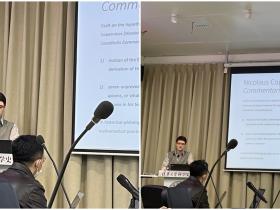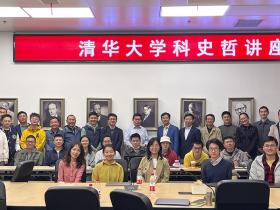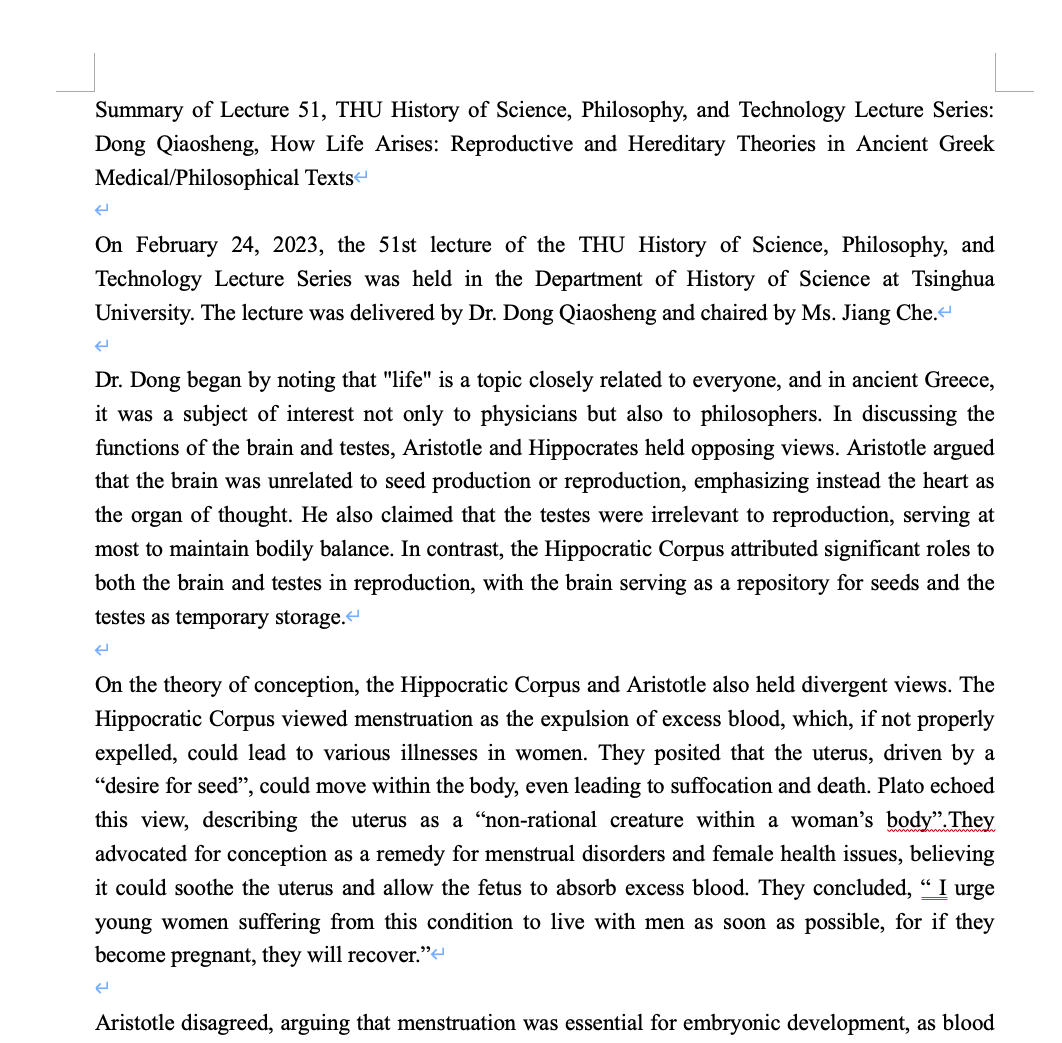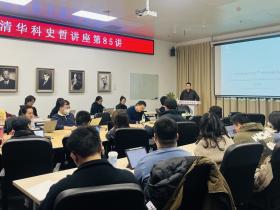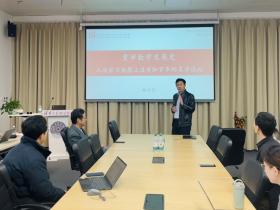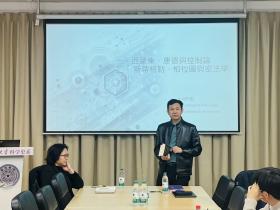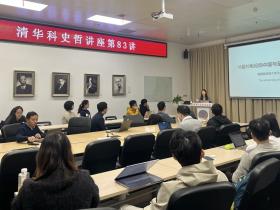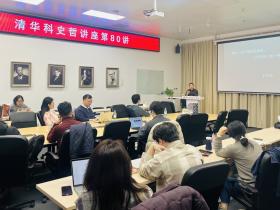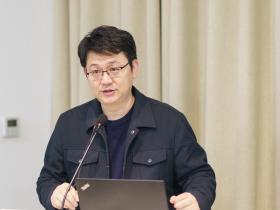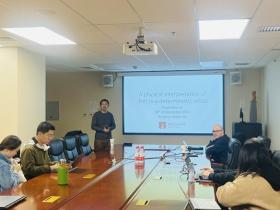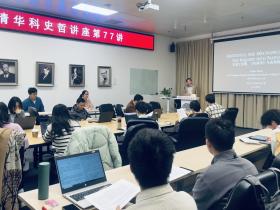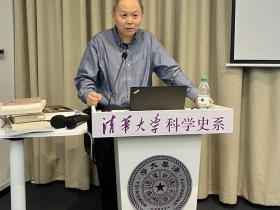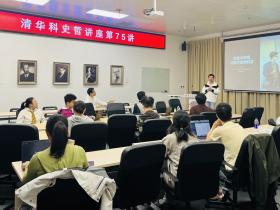On the morning of December 13, 2023, Lecture 58 of the Tsinghua Science, History, and Philosophy Lecture Series was held in the department hall. The lecture featured Professor Hu Danian from the Social Science Center of Southern University of Science and Technology. His presentation was titled “John L. Heilbron on Kuhn and The Structure of Scientific Revolutions”.The lecture was chaired by Associate Professor Jiang Che from the Department of History of Science at Tsinghua University.
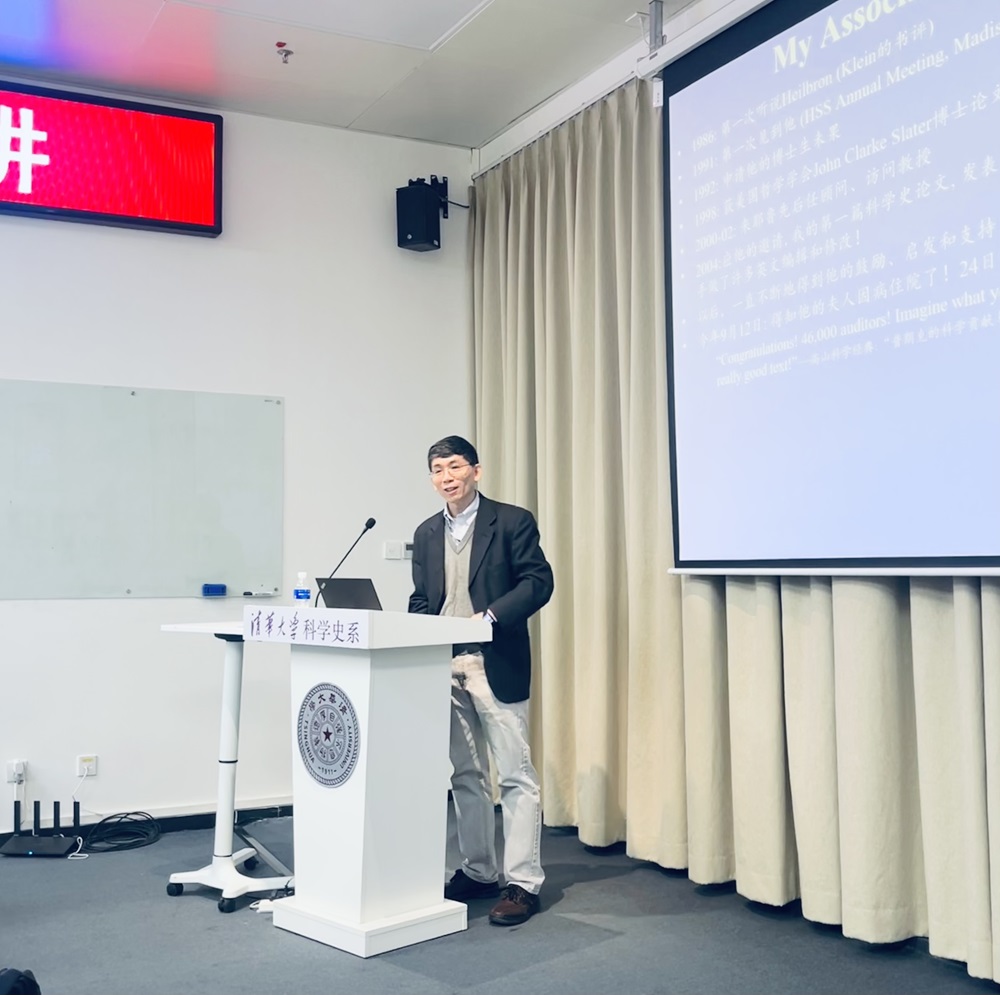
Before the lecture began, Associate Professor Jiang Che introduced the speaker, Professor Hu Danian. Professor Hu earned his Ph.D. from Yale University and taught in the United States for many years before returning to China in 2022 to join Southern University of Science and Technology. His research primarily focuses on the history of science and technology in twentieth-century China. His first English monograph, China and Albert Einstein, was published by Harvard University Press in 2005, and its revised Chinese edition, Einstein in China, was published in 2006.
The lecture began with Professor Hu Danian introducing the life and work of John L. Heilbron (1934–2023) and highlighting his connection to his mentor, Thomas Kuhn. Heilbron earned his Ph.D. in history from the University of California, Berkeley, in 1964. He later taught at the University of Pennsylvania (1964–1967) and the University of California, Berkeley (1967–1997), among other prestigious institutions, and was the recipient of awards such as the Sarton Medal and the Koyré Medal. Heilbron's research spanned the history of early modern European astronomy and natural philosophy, as well as the revolutions in twentieth-century physics.
Before earning his Ph.D. in history, Heilbron was a doctoral candidate in physics. Although he had always wanted to study medieval history, he was not initially accepted into the history department until Kuhn came to Berkeley from Harvard. Heilbron successfully transferred to Kuhn's supervision and became a key collaborator in Kuhn's writing of The Structure of Scientific Revolutions (hereafter The Structure) and his Historical Studies in the Quantum Revolution project. Despite not fully agreeing with his mentor's views, in Heilbron's eyes, Kuhn was both a revolutionary in theory and in practice.
The lecture focused on the debates surrounding the concepts of “paradigms” and “incommensurability.” Regarding the debates over paradigms, Professor Hu mentioned the “barn” controversy of 1963 and the “lion’s den” expedition of 1965. In the 1963 “barn” controversy, Ole Petersen, who had been Niels Bohr’s secretary, argued that The Structure did not align with history. He questioned the cyclical alternation of paradigms and scientific revolutions, as well as the applicability of the theory of scientific revolutions to quantum physics. In the 1965 “lion’s den” expedition, philosopher Karl Popper criticized the idea of grouping some scientists’ work under “normal science” and imposing paradigmatic constraints as a form of elitism. These were just some of the criticisms, but Heilbron believed that paradigms might possess all the flaws pointed out by their critics without diminishing the idea they provided.
Regarding the debates over incommensurability, a highly controversial issue was the incommensurability between Kuhn’s own historiographical framework and his historical work The Theory of Heat Radiation and the Origins of the Quantum Discontinuity (hereafter The Black Body). Heilbron argued that the root of the problem lay in Kuhn's pursuit of a “perfectly coherent explanation” and his assumption of “thinkers with perfect coherence”.
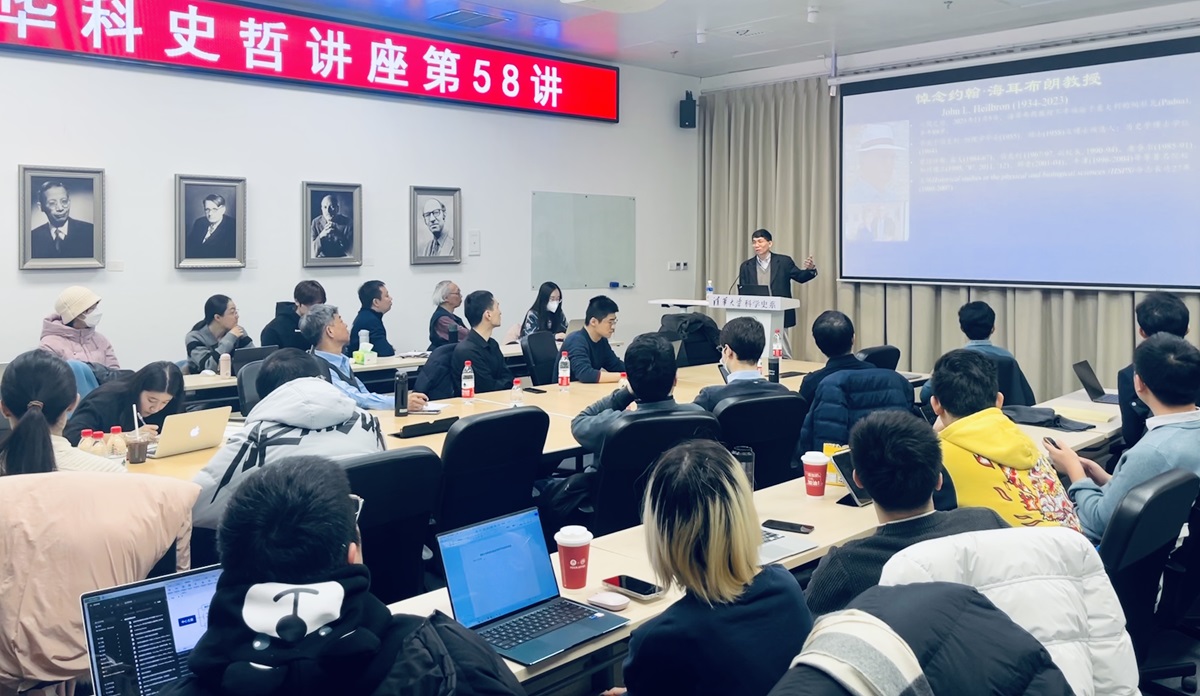
At the end of the lecture, Professor Hu Danian summarized Heilbron’s evaluation of The Structure: it was controversial yet inspiring. During the open Q&A session, faculty members engaged in lively discussions. Professor Ai Bo asked about the relationship between literary reading and scientific thinking. Professor Lin Lei commented on the “positive side effects” of Kuhn’s historical research on thermodynamics in The Structure. Professor Wang Wei provided references from the history of science philosophy regarding the concept of discontinuity. Professor Lu Yili focused on Heilbron’s academic publications after retirement, and Professor Jiang Che discussed with the speaker the specifics of Heilbron’s work as Kuhn's assistant.
Just as The Structure itself is rich in meaning, the lecture concluded with the lingering resonance of the lively discussions.


